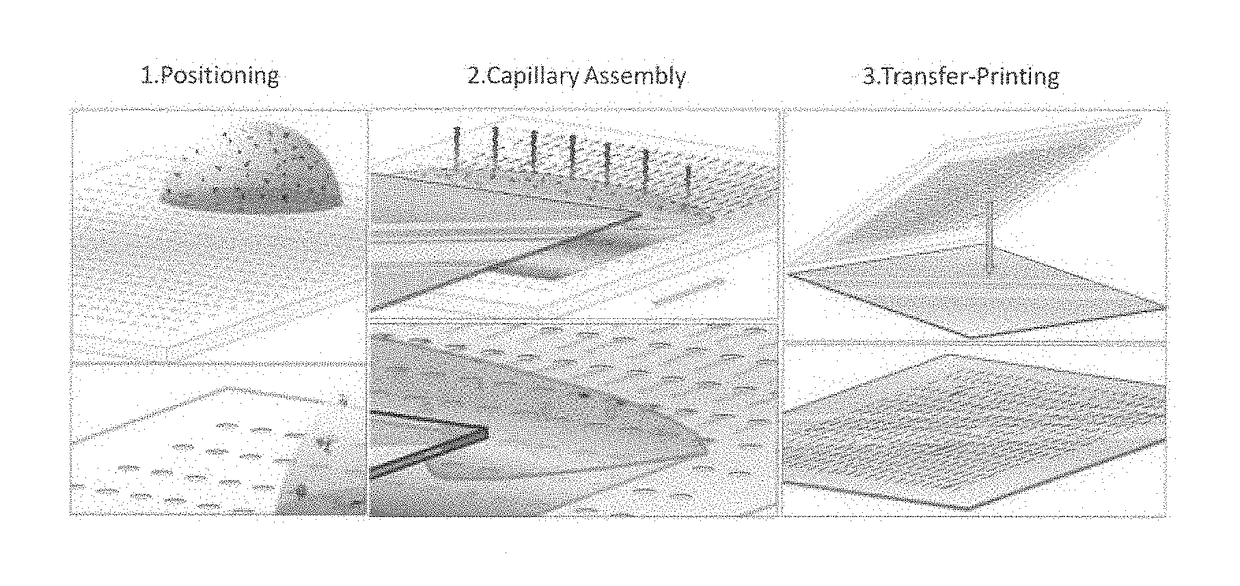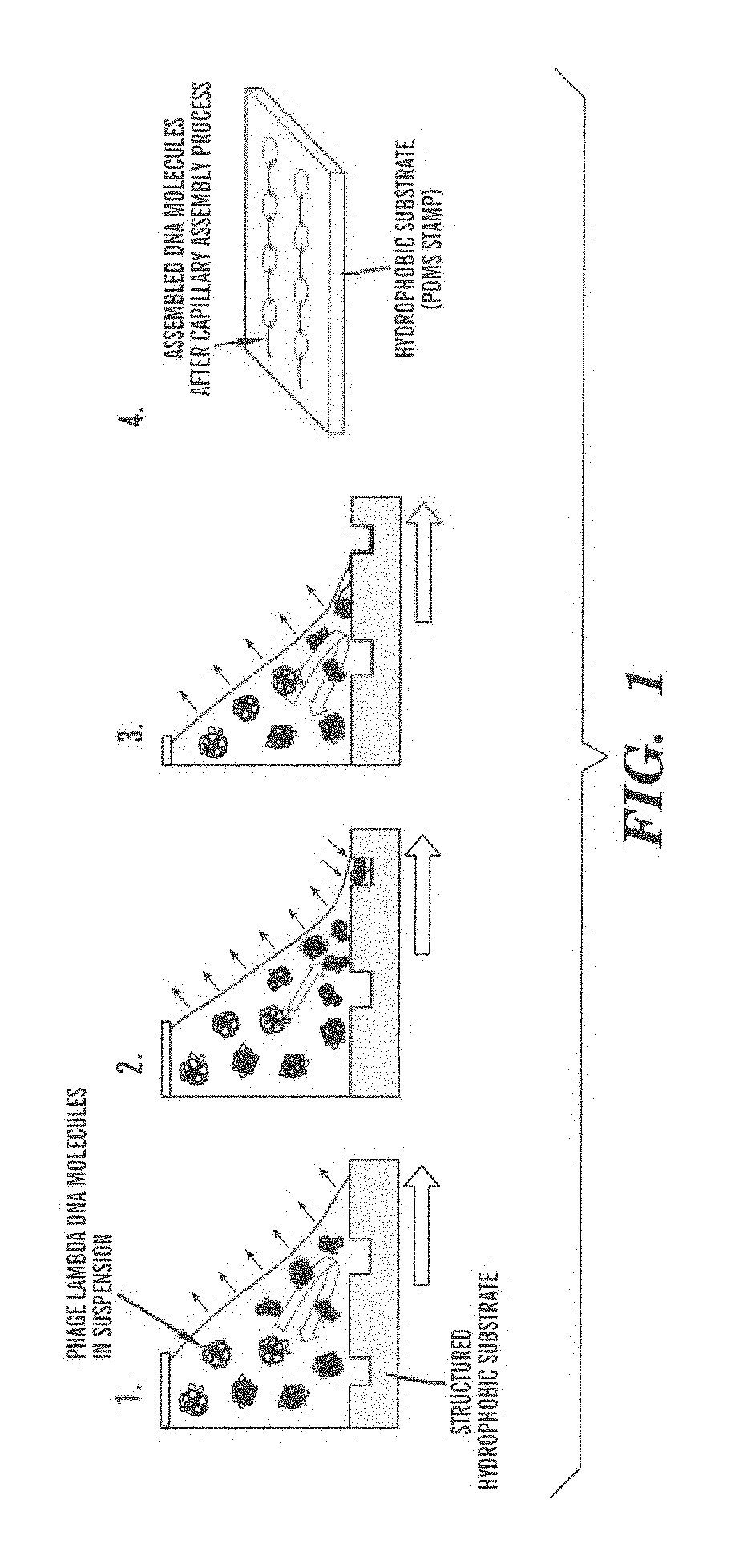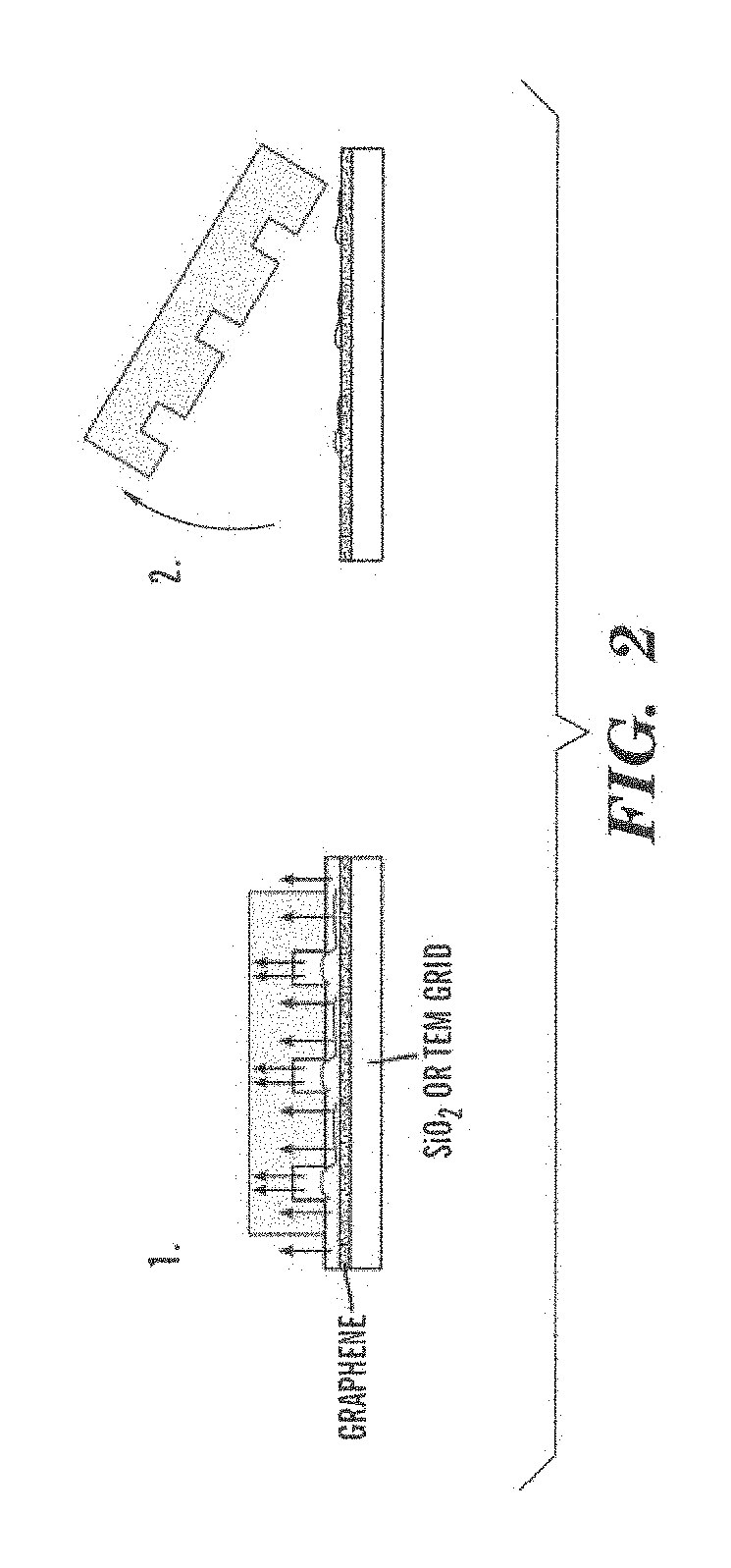Methods and arrays for controlled manipulation of DNA and chromatin fragments for genetic and epigenetic analysis
a technology of chromatin fragments and dna, which is applied in the field of genetic and epigenetic analysis controlled manipulation of dna and chromatin fragments, can solve the problems of poor repeatability of molecule to molecule, not yet available for general use, and none of these methods is yet in general use, so as to achieve better understanding, hinder valuable information, and difficult image
- Summary
- Abstract
- Description
- Claims
- Application Information
AI Technical Summary
Benefits of technology
Problems solved by technology
Method used
Image
Examples
example 1
Transfer-Printing of Single DNA Molecule Arrays on Graphene for High Resolution Electron Imaging and Analysis
[0105]This example describes a new procedure for depositing ordered arrays of individual elongated DNA molecules on single-layer graphene substrates for high resolution electron beam imaging and electron energy loss spectroscopy (EELS) analysis. This demonstrates the capability to observe elemental composition of DNA with sufficient resolution to directly read genetic and epigenetic information with single base spatial resolution from individual elongated DNA molecules.
Methods
[0106]Materials.
[0107]To prepare phage lambda DNA solution, 100 μl phage lambda DNA solution (Sigma, 48 502 bp, 329 μg / ml diluted to 50 μg / ml in 10 mM Tris-HCl / 1 mM EDTA, pH 8) was heated at 65° C. for 5 min and dipped into ice water to avoid molecular concatenation. For fluorescence imaging, the solution was then fluorescently labeled with YOYO-1 intercalator (Invitrogen) by adding 1.5 μl of YOYO-1 (100...
example 2
Single DNA Molecule Patterning for High-Throughput Epigenetic Mapping
[0132]This example describes a new method for profiling the 5-methyl cytosine distribution on single DNA molecules. Our method combines soft-lithography and molecular elongation to form ordered arrays estimated to contain more than 250 000 individual DNA molecules immobilized on a solid substrate. The methylation state of the DNA is detected and mapped by binding of fluorescently labeled methyl-CpG binding domain peptides to the elongated dsDNA molecules and imaging of their distribution. The stretched molecules are fixed in their extended configuration by adsorption onto the substrate so analysis can be performed with high spatial resolution and signal averaging. We further prove this technique allows imaging of DNA molecules with different methylation states.
[0133]In this example, we present a method for transferring regular arrays of individual elongated DNA molecules onto SiO2 substrates for optical analysis. I...
example 3
Ordered Arrays of Native Chromatin Molecules for High-Resolution Imaging and Analysis
[0143]Individual chromatin molecules contain valuable genetic and epigenetic information. To date, there have not been reliable techniques available for the controlled stretching and manipulation of individual chromatin fragments for high-resolution imaging and analysis of these molecules. We report the controlled stretching of single chromatin fragments extracted from two different cancerous cell types (M091 and HeLa) characterized through fluorescence microscopy and atomic force microscopy (AFM). Our method combines soft-lithography with molecular stretching to form ordered arrays of more than 250,000 individual chromatin fragments immobilized into a beads-on-a-string structure on a solid transparent support. Using fluorescence microscopy and AFM, we verified the presence of histone proteins after the stretching and transfer process.
[0144]We present a method for the stretching of chromatin molecul...
PUM
| Property | Measurement | Unit |
|---|---|---|
| concentration | aaaaa | aaaaa |
| diameter | aaaaa | aaaaa |
| diameter | aaaaa | aaaaa |
Abstract
Description
Claims
Application Information
 Login to View More
Login to View More - R&D
- Intellectual Property
- Life Sciences
- Materials
- Tech Scout
- Unparalleled Data Quality
- Higher Quality Content
- 60% Fewer Hallucinations
Browse by: Latest US Patents, China's latest patents, Technical Efficacy Thesaurus, Application Domain, Technology Topic, Popular Technical Reports.
© 2025 PatSnap. All rights reserved.Legal|Privacy policy|Modern Slavery Act Transparency Statement|Sitemap|About US| Contact US: help@patsnap.com



